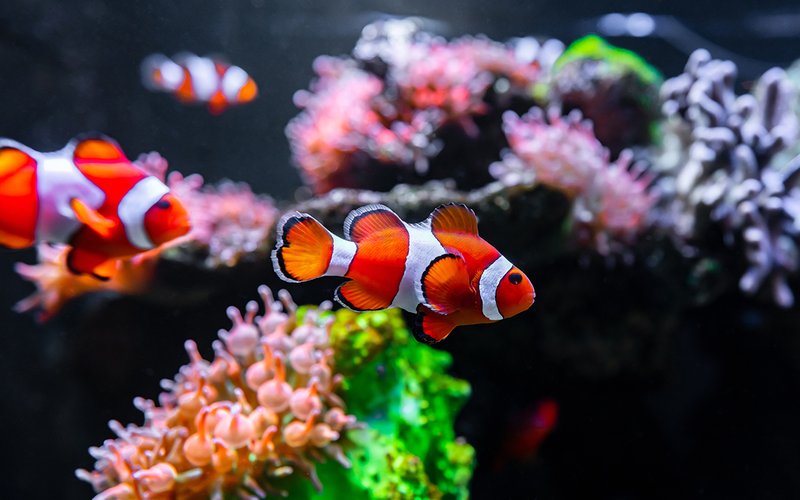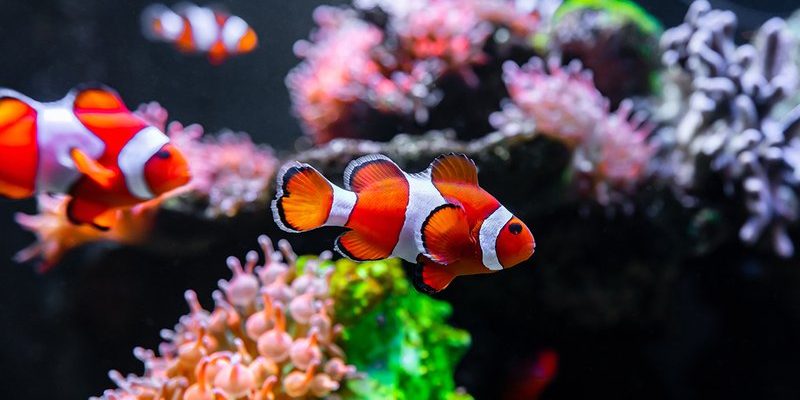
Imagine setting up your aquarium like baking a cake. Skipping a key ingredient, or misreading the recipe can leave you with a flop instead of a delicious treat. The same goes for saltwater aquariums. They need careful attention and the right mix of elements to thrive. Let’s explore some of the common mistakes beginners make that can turn that vibrant vision into a murky misadventure.
1. Underestimating the Importance of Proper Cycling
One of the biggest mistakes beginners make is diving in without properly cycling their tank. Think of cycling as the foundation of your aquarium; it’s like letting the dough rise before baking. Cycling establishes beneficial bacteria that break down waste, keeping your tank healthy.
When you first set up your aquarium, it’s crucial to introduce the right mix of ammonia, nitrites, and nitrates. You see, this process can take several weeks, as the bacteria need time to grow. If you skip this step, you risk shocking your fish and corals, leading to stress or even death.
To cycle your tank properly, you can use several methods:
- Fishless Cycling: Adding ammonia directly to the tank creates the necessary conditions for bacteria to flourish without harming any fish.
- Driftwood or Substrate: Using live rock or seasoned substrate can help kickstart the cycling process because they often contain beneficial bacteria.
- Patience Is Key: It may take one to two months, but it’s worth the wait for a stable environment!
So, before you add your colorful fish or coral, ensure your tank is ready to support them.
2. Choosing the Wrong Fish for Your Setup
Selecting fish for your saltwater aquarium can feel like shopping for shoes: not every pair fits every foot. Many beginners pick fish based on looks rather than compatibility, leading to a potential disaster.
Here’s the thing: different species have unique needs and behaviors. Some fish are relaxed while others are aggressive. Mixing them without research can lead to stress, aggression, or worse, one fish eating another. For example, a clownfish might seem like a great addition, but if you pair it with a more territorial species, it could lead to conflict.
To avoid this mistake, consider these pointers:
- Research Compatibility: Before adding any fish, look up their compatibility with your current or planned tank mates.
- Group Dynamics: Some fish need to be in schools, while others prefer solitude. Knowing this helps create a balanced aquarium.
- Tank Size Matters: Ensure your tank size can accommodate the adult size of the fish. A small tank with large fish can lead to stress and health issues.
Planning your fish selection carefully will help create a harmonious underwater community.
3. Forgetting About Water Quality
Imagine going for a refreshing swim in a pool that hasn’t been cleaned in weeks. Not so appealing, right? The same goes for your aquarium; maintaining water quality is crucial for keeping your aquatic friends alive and thriving.
Many beginners overlook this vital aspect, thinking that once the tank is set up, it will take care of itself. Unfortunately, that’s far from the truth. The water’s pH, salinity, and temperature need regular monitoring. Poor water quality can lead to illnesses, algae blooms, and even death.
Here’s how to keep your water in top shape:
- Use a Test Kit: Regularly test the water parameters—ammonia, nitrite, nitrate, pH, and salinity—to ensure they’re at safe levels.
- Change Water Regularly: Performing water changes of around 10-20% weekly helps keep the balance in check.
- Invest in Quality Equipment: A reliable filter and heater can make a world of difference.
Monitoring water quality might seem like a chore, but it’s one of the best ways to keep your tank healthy.
4. Overfeeding Your Fish
We’ve all seen those cute, pleading fish faces when it’s feeding time. It’s so tempting to keep tossing in food, but this is a classic rookie mistake. Overfeeding can lead to complications such as poor water quality and fish obesity.
Just like humans, fish don’t need to eat until they’re ready to burst. Feeding them too much can cause leftover food to rot, leading to ammonia spikes in your tank. This not only harms your fish but also affects your beneficial bacteria.
To avoid overfeeding, consider these strategies:
- Follow Feeding Guidelines: Most fish only need to be fed once or twice a day, with a small amount they can consume within a few minutes.
- Variety Is Key: Offer different types of food, like flakes and frozen options, to keep their diet balanced.
- Observe Your Fish: If they’re leaving food uneaten, cut back on how much you give them.
Your fish will thrive with well-measured feedings, and you’ll save yourself some headache!
5. Skipping Regular Maintenance
Having a saltwater aquarium isn’t just about filling it with water and watching the fish swim. It’s more like tending a garden. Regular maintenance is essential for the health of your underwater ecosystem.
Many beginners think once their tank is set up, they can just enjoy the view. However, neglecting maintenance can lead to bigger issues down the line. This can include algae overgrowth, disease outbreaks, and equipment failure.
To keep your aquarium in tip-top shape, remember these tips:
- Routine Cleaning: Regularly clean your tank, including scrubbing algae from the walls and doing partial water changes.
- Check Equipment: Regularly inspect your filter, heater, and lighting to ensure they’re working correctly.
- Stay Observant: Keep an eye on your fish for any signs of distress or illness. Early intervention can prevent bigger problems.
Establishing a routine can help make maintenance a simple part of your aquarium care.
6. Ignoring the Cycle of Algae Growth
If you stroll past a well-stocked aquarium, you might notice that some have a bit of algae growth. While algae can be a normal part of a saltwater environment, too much is a major red flag. Beginners often overlook algae management, which can lead to an uncontrollable bloom.
Here’s the thing: algae thrives on excess nutrients from uneaten food and waste. This can quickly cloud your tank and reduce the amount of light reaching your corals.
To manage algae effectively, consider these strategies:
- Control Feeding: Avoid overfeeding your fish, as mentioned earlier. Less food means fewer nutrients for algae.
- Use Clean-Up Crew: Introduce snails, hermit crabs, and other critters that naturally help control algae.
- Limit Light Exposure: Too much light can fuel algae growth. Use a timer for your lighting system to prevent overexposure.
Keeping an eye on algae can maintain a healthy, visually appealing environment for your aquatic friends.
7. Neglecting Temperature and Salinity Levels
For most saltwater creatures, the right temperature and salinity levels are crucial, like a cozy blanket on a chilly night. Beginners often forget these details, leading to stress and potential health issues for their fish and corals.
Sudden changes in temperature or salinity can shock your aquatic inhabitants. For example, if the temperature fluctuates too much, it can lead to diseases or even death.
To keep your aquatic friends comfortable, follow these guidelines:
- Invest in a Quality Heater and Thermometer: Ensure your heater maintains a stable temperature, and check it frequently.
- Salinity Checks Are Key: Use a hydrometer or refractometer to regularly monitor salinity levels.
- Gradual Adjustments: If you need to change the temperature or salinity, do it slowly to avoid shocking your fish.
By keeping the environment stable, you create a sanctuary where your aquatic pets can flourish.
Starting a saltwater aquarium is an incredible adventure, full of beautiful fish and stunning corals. But as you’ve seen, it’s easy to make mistakes that can lead to sorrow instead of joy. By understanding and avoiding these common pitfalls, you can set up a thriving aquatic ecosystem that brings you enjoyment for years to come.
Remember, patience is your best friend in this journey. Each time you engage in routine maintenance or carefully select fish for your tank, you’re building a solid foundation for your underwater world. Embrace the learning process, and soon you’ll be enjoying a vibrant, healthy saltwater aquarium that you can truly be proud of.

